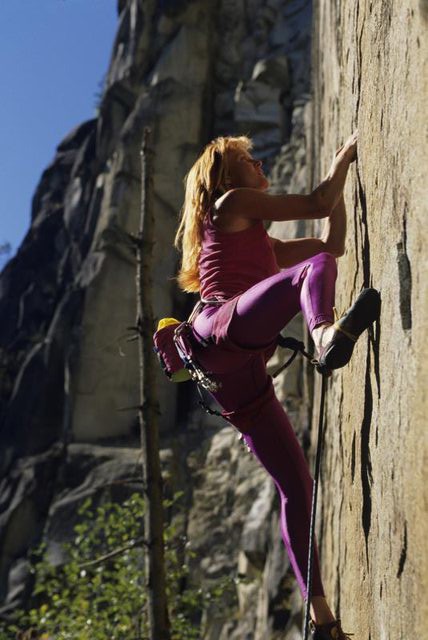
Overview
Climbers are not known for eagerly conforming to rules or standards. Quite the opposite, in fact. One result of this approach to life is a wide variance in, and rabid defense of, personal climbing styles. Some mountaineers prefer a light-and-fast approach, carrying as little as possible, while others bring the kitchen sink along. Just in case. But no matter what your climbing style, there are some mountaineering tools you just can’t do without.
Footwear
Double boots, with a hard plastic shell and softer insulating liner, are common footwear on expedition climbs. Some mountaineers choose to climb in ski boots to facilitate a ski descent. The one real requirement for mountaineering footwear, aside from keeping your feet warm and dry, is that they must have rigid or nearly rigid soles to accommodate crampons.
Crampons
Crampons strap or clip onto your mountaineering boots. Most mountaineering crampons have at least 12 small spikes, properly known as points, that point down and forward to provide traction on snow and ice.
Rope
What sort of rope you take on your mountaineering adventure depends very much on your own personal style and preferences. Rope diameters typically range anywhere from about 7.6 mm to more than 10 mm, and slender ropes may be used singly or in pairs.
Belay Device
Like rope, which belay device you use will depend on your technique, style and above all personal preference. You’ll find mountaineers climbing with anything from classic figure-8 belay devices and Sticht plates to endless variations on the tube-style ATC. Regardless of which belay device you choose, its essential purpose is the same: Applying friction to the rope to stop a climber’s fall.
Harness
The harness is your point of connection to the rope. Mountaineers usually spend less time hanging in their harness than sport or trad climbers, so mountaineering harnesses are usually relatively uncomfortable affairs with as little padding as possible to save weight.
Ice Axe
The typical mountaineering ice axe is shaped roughly like a T. One end of the T’s crossbar is a pointy pick that can be plunged into ice or hard snow. The other end is a flat adze that, in olden days, was used to chop steps into hard-packed snow and ice. The mountaineering ice axe serves a number of purposes, chief among them as an anchor to arrest falls.
Some mountaineers may choose to carry two ice-climbing tools instead of or in addition to a mountaineering ice axe, or a single ice-climbing tool to be paired with the ice axe at need. Ice-climbing tools are small versions of ice axes that have been adapted to suit the task of glacier and waterfall ice climbing.
